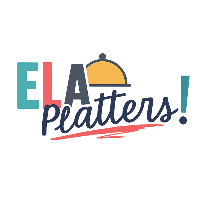When it comes to English Language Arts (ELA), building rapport isn’t just nice—it’s necessary. Why? Because language, reading, and writing are deeply personal. Students need to feel safe sharing their ideas and expressing themselves. Without trust, true learning stalls.
Understanding the Unique Needs of ELA Students
ELA students juggle critical thinking, creativity, and often, vulnerability. Whether it’s sharing a personal narrative or interpreting complex literature, they need a foundation of trust with their teacher to fully engage and grow.
Key Principles for Building Strong Student Relationships
Authenticity is Key
Kids can spot a fake from a mile away. Be yourself. Share your quirks, your passions, and even your mistakes. Authenticity invites authenticity.
Consistency Builds Trust
Consistency in expectations, reactions, and communication reassures students. They need to know you’ll be steady, no matter what.
Active Listening Opens Doors
Listen with the intent to understand, not just to reply. Eye contact, nodding, and thoughtful responses show students they are heard and valued.
Strategies to Foster Rapport in the Classroom
Personalize Learning Experiences
Find ways to link assignments to your students’ lives and interests. If Jimmy loves skateboarding, let him write an essay about it. Personalization shows you care about who they are, not just what they produce.
Create a Safe and Inclusive Environment
Model kindness, encourage open dialogue, and make your classroom a safe harbor for every voice. Safety breeds vulnerability, which breeds real connection.
Show Genuine Interest in Students’ Lives
Know their hobbies, favorite books, or weekend plans. Small questions like “How was your soccer game?” can mean the world to a student.
Use Positive Reinforcement
Praise effort, not just outcomes. Highlight resilience, creativity, and growth. A simple “I’m proud of you” can fuel motivation like nothing else.
Daily Practices to Strengthen Bonds
Morning Check-Ins
Start the day with quick emotional check-ins. Simple prompts like “One word to describe how you’re feeling today?” can reveal so much and set a supportive tone.
Reflective Journals and Conversations
Let students write privately about their thoughts and feelings. Occasionally, invite those reflections into conversation to deepen your understanding.
How Language and Communication Shape Relationships
Your tone matters. Warmth, humor, and encouragement in your speech can either open or close the door to connection. Think of it as planting seeds—you may not see the tree grow today, but you’re laying roots.
Cultural Awareness and Sensitivity in ELA
Respect and celebrate the diverse backgrounds students bring to your classroom. Incorporate multicultural texts and discussions. Acknowledge their lived experiences, and your classroom will flourish with richer dialogue and understanding.
Using Literature as a Bridge for Connection
Books create shared experiences. Use literature to spark conversations that transcend academics—talk about empathy, resilience, dreams, and struggles. When students see themselves in stories, they feel seen by you too.
Group Activities That Build Community
Collaborative projects, peer reviews, and literature circles aren’t just academic tools—they’re ways for students to see each other’s strengths, build empathy, and practice respect.
Challenges in Building Rapport and How to Overcome Them
It won’t always be smooth. Some students are guarded. Others may test boundaries. Stay patient. Keep reaching out. Every interaction is a brick in the bridge you’re building.
Measuring the Impact of Strong Rapport
You’ll know it’s working when students take more risks, ask more questions, and start pushing themselves. Engagement skyrockets when students trust you.
Long-Term Benefits of a Positive Teacher-Student Relationship
Students who trust their teachers often develop a love for learning that lasts beyond school. You’re not just teaching them to analyze Shakespeare—you’re teaching them to trust adults, advocate for themselves, and believe they matter.
Conclusion: The Heart of Teaching ELA
At its core, ELA is about human connection—connecting with texts, with ideas, and most importantly, with each other. Building meaningful rapport isn’t an extra; it’s the foundation that makes all the other magic possible.
FAQs
1. How long does it take to build strong rapport with ELA students?
It varies. Some connections happen quickly, while others take months. Consistency and authenticity are key over the long haul.
2. What if a student resists my efforts to build rapport?
Stay patient. Respect their pace. Some students need more time or a different approach. Keep showing up and showing care.
3. How can I balance discipline and rapport?
Being consistent, fair, and respectful with discipline actually strengthens rapport. Students appreciate clear, respectful boundaries.
4. Can building rapport affect academic performance?
Absolutely. Students are more engaged, willing to take risks, and open to feedback when they trust their teacher.
5. How does cultural sensitivity impact rapport?
Respecting and valuing a student’s background builds deep trust. It shows students they don’t have to hide who they are to succeed.

